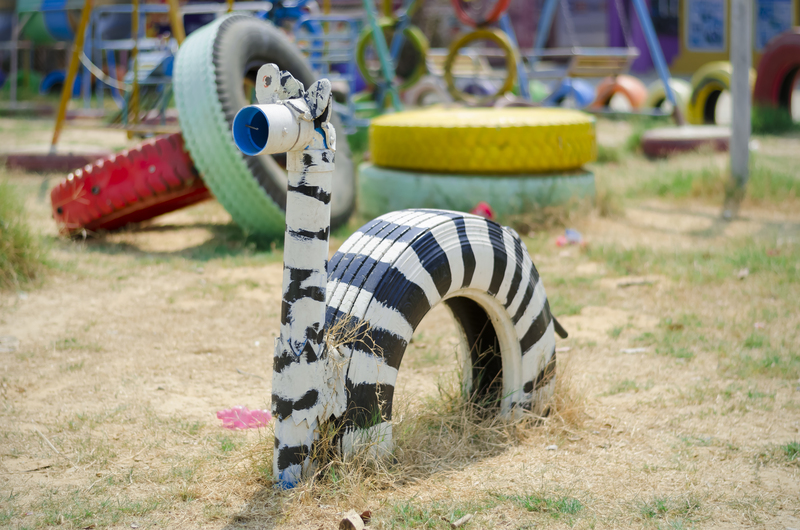Reducing Pollution Through Thoughtful PPE Waste Disposal
In recent years, the world has witnessed a surge in the use of personal protective equipment (PPE) due to public health crises and ongoing environmental challenges. While PPE such as masks, gloves, and face shields play a crucial role in safeguarding human health, improper disposal is quickly becoming a new source of pollution. Reducing pollution through thoughtful PPE waste disposal is not merely a suggestion--it's an urgent need that combines public health with environmental responsibility. This comprehensive guide explores the nuances, strategies, and importance of responsible PPE waste management.

Why PPE Waste Disposal Matters for Pollution Reduction
PPE waste, if neglected, poses a dual threat: contamination risks for humans and significant environmental consequences. Improper disposal can clog waterways, harm wildlife, and contribute to microplastic pollution. According to environmental reports, millions of masks and gloves find their way into oceans each year, where they may take decades--or even centuries--to decompose.
Understanding the impact of PPE pollution is the first step toward responsible action:
- Wildlife Endangerment: Animals can mistake PPE waste for food, leading to ingestion and potentially fatal injuries.
- Microplastic Generation: Many PPE products are made from synthetic materials that break down into microplastics, which contaminate soil and water sources.
- Clogged Drainage Systems: When PPE blocks sewers and waterways, the risk of urban flooding and sanitation issues increases.
- Human Health Hazards: Discarded PPE can become a vector for pathogens and infectious agents if handled improperly.
The Global Scale of PPE Waste Pollution
Research indicates that the world used over 129 billion face masks and 65 billion gloves each month during the height of the COVID-19 pandemic. Even with declining infection rates, the PPE market shows no signs of dramatically shrinking. Thus, finding solutions for reducing environmental pollution through PPE waste management is a global priority.
Key Strategies for Reducing Pollution from PPE Waste
Now that the dangers are clear, how can we, as individuals and communities, make a difference? Here are actionable steps for effective PPE waste reduction:
1. Prioritize Reusable PPE Whenever Possible
- Opt for washable masks: Fabric masks can be cleaned and reused many times, dramatically cutting down on single-use plastics.
- Encourage innovation: Support brands or local initiatives that develop recyclable or biodegradable PPE products.
Making the switch to reusable items is one of the simplest ways of reducing PPE-related environmental pollution at the source.
2. Proper Segregation of PPE Waste
- Do not mix with recyclables: Used PPE should never be mixed with general or recyclable waste due to contamination risks.
- Use designated bins: Many cities provide special PPE disposal bins or recommend double-bagging PPE waste before placing it in the trash.
Segregation prevents cross-contamination and facilitates the safe handling of potentially infectious materials.
3. Public Education and Awareness
- Raise community awareness: Distribute flyers, host workshops, and leverage social media to spread best practices for PPE waste disposal.
- Partner with local organizations: Collaborate with civic bodies, schools, and NGOs to run awareness drives.
Educational programs are vital to ensure consistent compliance across different sectors of society.
4. Support PPE Recycling Initiatives
- Participate in drop-off programs: Some companies now offer special collection points to recycle used masks and gloves safely.
- Encourage government incentives: Advocate for more investment in research to create scalable PPE recycling solutions.
Although recycling PPE is still an evolving field, supporting such efforts is crucial for achieving zero-waste PPE solutions in the future.
5. Safe Disposal Techniques for Households and Businesses
- Double-Bagging: Put used PPE in a separate bag, tie it securely, and then place it in the main garbage.
- Disinfection: Spray PPE waste with disinfectant before disposal to reduce pathogen risks.
- Clear Labeling: For businesses, mark bins clearly to avoid confusion and mixing of waste.
Safe handling and disposal protocols are the backbone of any effective PPE waste mitigation strategy.
The Role of Legislation and Corporate Responsibility
Regulatory bodies and corporations play a pivotal role in developing and enforcing standards for PPE waste pollution prevention:
Legislative Actions for PPE Waste Management
- Mandates on PPE disposal: Governments can enforce regulations for the safe collection, treatment, and disposal of PPE waste, including penalties for non-compliance.
- Guidelines for businesses: Industries using large quantities of PPE, such as healthcare and food processing, should have comprehensive waste management protocols.
- Support for innovation: Encourage research and funding for developing sustainable PPE options and recycling technologies.
A robust legal framework ensures that the burden doesn't fall solely on individuals but is equally shared by institutions and manufacturers.
Corporate Social Responsibility (CSR) in PPE Management
- Eco-friendly product design: Businesses can lead the way by introducing biodegradable PPE or packaging.
- PPE waste collection programs: Workplaces should set up dedicated PPE disposal points and educate employees on proper usage and disposal.
- Public awareness campaigns: Companies can use their platforms to inform the public about responsible waste practices.
When manufacturers and large-scale users act responsibly, it drives systemic change towards reducing PPE pollution at a macro level.
Emerging Technologies for PPE Waste Reduction
Technology continues to offer new options for minimizing the environmental impact of PPE waste. Here are a few innovations making a difference:
Biodegradable PPE Products
- Materials innovation: Advances in natural fibers and biopolymers allow for the creation of masks and gloves that degrade much faster than conventional plastics.
- Reduced toxicity: Biodegradable products do not release microplastics or toxic chemicals upon decomposition.
PPE Recycling and Upcycling
- Mechanical recycling: Specialized facilities can process used PPE into raw materials for construction, textiles, or other industrial applications.
- Upcycling projects: Some artists and innovators convert PPE waste into art or functional objects, spreading awareness about pollution.
Plasma Pyrolysis
- High temperature, low emissions: Plasma pyrolysis can treat PPE waste at extremely high temperatures, converting it into harmless gases without combustion.
- On-site deployment: This technology is being piloted in hospitals and quarantine centers where large volumes of PPE waste are generated.
Supporting or investing in these technologies is paramount if we are to turn the tide on PPE pollution and make waste disposal a part of the solution, not the problem.
Best Practices for Individuals: Becoming a PPE Pollution Solutionist
Each one of us has a role to play in reducing pollution through mindful PPE waste management. Here's how you can make a difference on a daily basis:
- Carry a reusable mask: Always keep a spare cloth mask in your bag or vehicle.
- Use hand sanitizer instead of gloves: When not strictly required, use sanitizers to minimize glove waste.
- Be a community ambassador: Encourage proper disposal habits among friends, family, and coworkers.
- Report illegal dumping: Notify authorities if you observe large-scale PPE littering in your community.
- Participate in clean-ups: Join or organize community drives to remove PPE litter from public spaces or waterways.
Case Studies: Communities Leading the Way
Several cities and organizations have already paved the way for effective PPE waste pollution control:
1. The PPE Recycling Plant in France
In 2021, a facility in France launched a process that collects, disinfects, and recycles used masks into construction materials. This pilot program has already processed tons of PPE waste, preventing their entry into landfills.
2. "Mask Drives" in Southeast Asia
Community groups in Southeast Asia, recognizing the environmental challenge, run recurring mask collection drives. Collected items are incinerated under controlled conditions--reducing open dumping and burning.
3. Corporate Initiatives in the United States
Major chain stores have placed PPE recycling bins at entrances, making it convenient for customers to dispose of used masks and gloves responsibly. Employees also receive training in safe waste handling.

Barriers to PPE Waste Reduction and How to Overcome Them
While the path to reducing PPE pollution is clear, obstacles remain:
- Lack of infrastructure: Many regions lack dedicated disposal or recycling options for PPE.
- Limited public awareness: There's a persistent knowledge gap about the proper way to discard PPE.
- Cost concerns: Biodegradable or reusable PPE can be perceived as expensive compared to single-use alternatives.
- Inconsistent regulations: Variations in policies make it difficult to enforce best practices uniformly.
*Overcoming these barriers requires collaboration between governments, industry leaders, researchers, and the public.* Strategies include investing in infrastructure, subsidizing sustainable PPE, launching targeted education campaigns, and developing international standards for PPE waste management.
Conclusion: A Call to Action for Thoughtful PPE Waste Disposal
The widespread adoption of thoughtful PPE waste disposal practices is vital for safeguarding both our environment and public health. By adopting reusable products, supporting recycling initiatives, following segregation protocols, and advocating for robust legislation, we can collectively move towards a cleaner, safer world.
*Let us reimagine our relationship with PPE--not as a source of pollution, but as an opportunity for sustainable innovation and responsible action.* By embracing proactive strategies for reducing pollution through thoughtful PPE waste disposal, we not only heal the planet but protect generations to come.
- Choose wisely--opt for reusable or biodegradable PPE whenever possible.
- Educate others--raise awareness in your community about responsible disposal.
- Advocate for change--support policies and technologies that reduce PPE waste pollution.
Together, our thoughtful choices can lead to a measurable reduction in PPE-related pollution--preserving both the health of our communities and the beauty of our planet.
